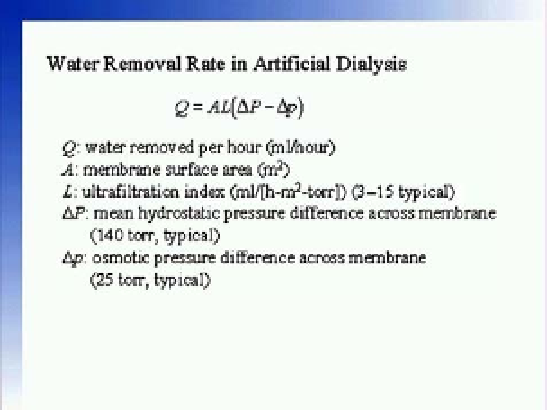Biomedical Engineering Reference
In-Depth Information
FIGURE 14.24
Water removal during dialysis via a hydrostatic pressure gradient and an osmotic pressure
gradient.
opening at right angles to that flow, there is a vacuum created at the opening, thus pulling
the water out of the blood and into the dialysate.
As can be seen from this section, mass transfer across membranes, either within the body
or within artificial organs, is vital to keeping us alive. Mass transfer allows cells to control
nervous impulses, blood chemistry, kidney and lung function, and hemostasis of bodily
functions. Mass transport occurs in virtually every cell in the body and is thus evaluated
on a smaller scale than that of fluid flow and fluid momentum, which is the subject of
the next section.
14.2 BI
OFLUID MECHANICS AND MOMENTUM TRAN
SPORT
We have already seen examples of mass transport of substances across membranes
within the human body and through those of artificial organs, such as dialyzers. In addition
to mass transport, there are numerous examples of
, with momentum
being the product of mass times velocity. This momentum transport is manifested in fluid,
such as air flow in the lungs and blood flow through the human circulatory system. Much
as there were guiding equations, such as Fick's Law, to govern mass transfer, there are also
guiding equations to govern fluid flow. In addition, much as there were parameters that
affected mass transfer and were properties of a given material (diffusivity is an example),
such is also the case for momentum transfer/fluid mechanics. Like diffusivity is a propor-
tionality constant for mass transfer, so is
momentum transport
a proportionality constant for fluid
mechanics. In mass transfer, the driving force was either a concentration gradient (for
liquids or solutes embedded in solvents) or a partial pressure gradient (for gases). For fluid
flow and momentum transport, the driving force is a pressure gradient. This is not a partial
pressure gradient but rather a standard pressure gradient, often called the hydrostatic
pressure.
viscosity


